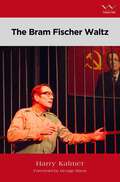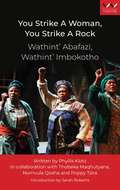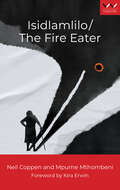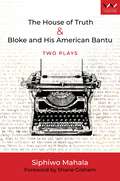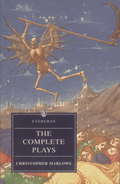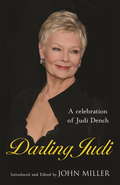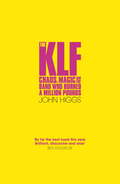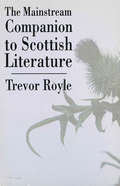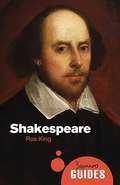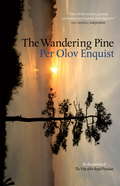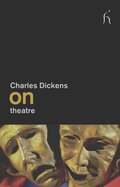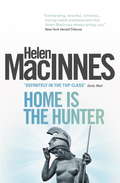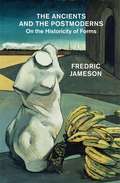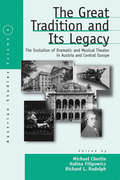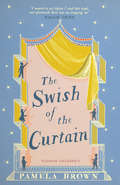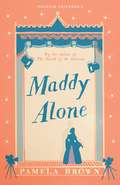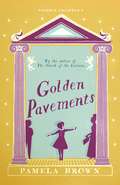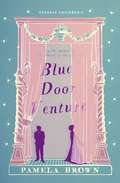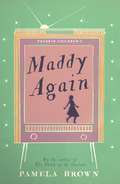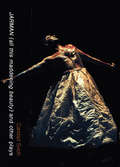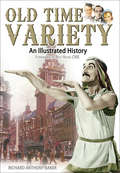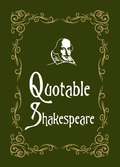- Table View
- List View
The Bram Fischer Waltz: A play
by Harry KalmerAlthough widely known as the Afrikaner communist who saved Nelson Mandela from the gallows, very little is known about Bram Fischer the man. Fischer was a respected Senior Advocate at the Johannesburg Bar who chose to side with the oppressed and went underground to join the armed struggle. He was arrested on 5 November 1965 after almost ten months on the run. ‘I owed it to the political prisoners, to the banished, to the silenced and to those under house arrest not to remain a spectator, but to act.’ These words spoken by Bram Fischer in his statement from the dock during his treason trial were followed by a life sentence. Scion of a proudly Afrikaner family that included a prime minister and a judge president of the Orange Free State, he would seem to be an unlikely hero of the liberation movement. Uncompromising in his political beliefs and driven by an unshakeable integrity and a commitment to the dream of a non-racial democracy, Fischer was also humorous, fun-loving and a family man, devoted to his wife and children. The many facets of this remarkable man are reflected in The Bram Fischer Waltz, Harry Kalmer’s lyrical tribute. A brief and intense work, with the protagonist as narrator, this one person play takes the audience through a roller coaster of emotions as it tells Fischer’s story. The play won The Standard Bank Silver Ovation Award when it premiered in English at 2013 the National Arts Festival in Grahamstown and was awarded the Adelaide Tambo Award for Human Rights in the Arts in 2014. The text is supplemented by a foreword by George Bizos and an introduction by the playwright, reflecting on the path that led him to write the play, and an afterword by Yvonne Malan, entitled ‘The Power of Moral Courage’.
You Strike a Woman, You Strike a Rock / Wathint’ Abafazi, Wathint’ Imbokotho: A play
by Phyllis Klotz Thobeka Maqhutyana Nomvula Qosha Poppy TsiraYou Strike a Woman, You Strike a Rock / Wathint’ Abafazi, Wathint’ Imbokotho is a bristling example of protest theatre making during the height of apartheid. Created in ensemble fashion in 1986 by director Phyllis Klotz in collaboration with performers Thobeka Maqhutyana, Nomvula Qosha and Poppy Tsira, this play stands as a contemporary South African classic.The play focuses on three central characters: Sdudla, Mambhele and Mampompo living and working in a Cape Town township trying to eke out a living in a racially, socially and economically unequal world. There are few work opportunities and there is a great deal of red tape to be self-sufficient. Men are glaringly absent from this world – working as cheap migrant labour in urban areas. Women have to undertake great risk to see their husbands and to try keep a semblance of family cohesiveness. Helicopters fly above and state security police surveil the area. The play shows how these women work miracles to ensure the survival and wellbeing of their families at all cost.Following the famous 1956 slogan of the South African woman’s march against apartheid laws, this latest publication in 2021 is a testament to the contemporariness of this play. Its themes around gender activism and the need for gender parity remains as true today as it did fifty years ago. Fresh and full of life, this is an important historical document and will be a landmark play for high schools and students of theatre.
Isidlamlilo / The Fire Eater: A play
by Neil Coppen Mpume Mthombeni Kira ErwinIsidlamlilo / The Fire Eater is a one-woman play inspired by the true story of a woman who served as a political assassin in the build-up to South Africa’s first democratic elections. Zenzile Maseko, the protagonist, is a 60-year-old grandmother living in a women’s hostel in Durban. Falsely declared dead by the Department of Home Affairs, she finds herself cast into a Kafkaesque nightmare that forces her to confront her past. Flown in on the wings of the Impundulu (the lightning bird), in Zulu folklore a shapeshifting bird associated with witchcraft and the harbinger of storms and death, Zenzile’s story weaves a magical and terrifying tapestry. She draws on myth, religious symbolism and traditional beliefs as she shares the realities – at times brutal, at times forgiving – of survival in South Africa. Her story touches on what it means to live through political violence, the transition to democracy, the brutality of inequality, health epidemics like HIV/AIDS, patriarchy, and the apathetic bureaucracy of government departments. Ultimately, Isidlamlilo / The Fire Eater offers a critical and unflinching look at the eddying cycles of violence and revenge that play out across generations. Yet it is most of all a story about regeneration and redemption that speaks to both the country’s haunted past and its present-day complexities.Written with pathos and empathy, this playscript will appeal to teachers, high school learners, and tertiary students in theatre, drama and English studies.
House of Truth & Bloke and His American Bantu: Two plays
by Siphiwo MahalaSiphiwo Mahala delves into the lives of iconic figures from South Africa's tumultuous past in this remarkable collection of plays. The collection opens with The House of Truth, which explores the complexity of Can Themba, a fearless journalist, playwright and poet living under an oppressive apartheid regime. The one-man play weaves together elements of Themba's life and career, recreating the excitement and pathos of the DRUM era South Africa's first magazine for a black audience, and his resident neighborhood, Sophiatown in Johannesburg, before it was destroyed by apartheid legislation. Themba is brought back to life as an ordinary person with human flaws and attributes both tragic and inspirational.In the second play, Bloke and His American Bantu. Mahala brings to life the extraordinary lives of Bloke Modisane, a South African writer exiled in London, and Langston Hughes, the renowned American poet. This two-hander play celebrates their remarkable camaraderie and intellectual exchange. Through a reimagined correspondence, the play deftly explores how a simple friendship blossomed into a catalyst for international solidarity and cultural exchange across continents, from Africa to the UK to America.As a whole, the plays explore the intersections of identity, creativity and resistance. With wit, poise, and unflinching honesty, they bring to life the triumphs and struggles of these remarkable men who left an indelible mark on their worlds, and celebrate the human spirit's capacity to persevere, inspire and uplift.
Christopher Marlowe: Complete Plays (The Everyman Library #102)
by Christopher Marlowe J. M. DentTheir texts fully restored by recent scholarship, Marlowe's astonishing works can now be appreciated as originally written. For the first time, this edition boasts the complete plays - including two versions of Doctor Faustus.Blasphemy, perversion, defiance and transgression ... in a series of compelling tragedies, Marlowe challenged every authority of heaven and earth. From the proud wrath of Tamburlaine, the tyrant of Asia, to the racked anguish of Edward II, himself in thrall to unspeakable desires; from God's own Machiavel, the Duke of Guise, to Barabas, the Jew of Malta, curse of Christianity: all are taboo-breakers, to be broken in their turn. And in the tragedy of Doctor Faustus we perhaps read Marlowe's own: a tale of brilliance and audacity - and of terrible, inexorable punishment.Their texts fully restored by recent scholarship, Marlowe's astonishing works can now be appreciated as originally written. For the first time, this edition boasts the complete plays - including two versions of Doctor Faustus.
Marlowe: Complete Plays
by Christopher MarloweTheir texts fully restored by recent scholarship, Marlowe's astonishing works can now be appreciated as originally written. For the first time, this edition boasts the complete plays - including two versions of Doctor Faustus.Blasphemy, perversion, defiance and transgression ... in a series of compelling tragedies, Marlowe challenged every authority of heaven and earth. From the proud wrath of Tamburlaine, the tyrant of Asia, to the racked anguish of Edward II, himself in thrall to unspeakable desires; from God's own Machiavel, the Duke of Guise, to Barabas, the Jew of Malta, curse of Christianity: all are taboo-breakers, to be broken in their turn. And in the tragedy of Doctor Faustus we perhaps read Marlowe's own: a tale of brilliance and audacity - and of terrible, inexorable punishment.Their texts fully restored by recent scholarship, Marlowe's astonishing works can now be appreciated as originally written. For the first time, this edition boasts the complete plays - including two versions of Doctor Faustus.
Darling Judi: A Celebration of Judi Dench
by VariousA celebration of Britain's favourite actress, Judi DenchThe very name Judi Dench encourages a warm and admiring response from the public and fellow actors alike. Her wide-ranging career includes numerous Shakespearean performances (most recently in ALL'S WELL THAT ENDS WELL at the RSC) and contemporary theatre (in plays by, among others, David Hare and Hugh Whitemore); on television (in the series A FINE ROMANCE and AS TIME GOES BY) and in the cinema (MRS BROWN, her Oscar-winning performance in SHAKESPEARE IN LOVE, THE SHIPPING NEWS, IRIS, and in four James Bond films as 'M').Judi Dench is as popular as she is talented - when she and Maggie Smith appeared together in a David Hare play last year all seats were sold for the entire run within 24 hours.John Miller, her biographer, invited fellow actors, writers, and people of the theatre, film and television, to illustrate her genius and her character from their own experience and perspective. With contributors ranging from Billy Connolly to Hugh Whitemore, Bob Larbey to Tim Pigott-Smith, this is a unique portrait of the legend that is Dame Judi Dench.
Darling Judi: A Celebration of Judi Dench
by VariousA celebration of Britain's favourite actress, Judi DenchThe very name Judi Dench encourages a warm and admiring response from the public and fellow actors alike. Her wide-ranging career includes numerous Shakespearean performances (most recently in ALL'S WELL THAT ENDS WELL at the RSC) and contemporary theatre (in plays by, among others, David Hare and Hugh Whitemore); on television (in the series A FINE ROMANCE and AS TIME GOES BY) and in the cinema (MRS BROWN, her Oscar-winning performance in SHAKESPEARE IN LOVE, THE SHIPPING NEWS, IRIS, and in four James Bond films as 'M').Judi Dench is as popular as she is talented - when she and Maggie Smith appeared together in a David Hare play last year all seats were sold for the entire run within 24 hours.John Miller, her biographer, invited fellow actors, writers, and people of the theatre, film and television, to illustrate her genius and her character from their own experience and perspective. With contributors ranging from Billy Connolly to Hugh Whitemore, Bob Larbey to Tim Pigott-Smith, this is a unique portrait of the legend that is Dame Judi Dench.
The KLF: Chaos, Magic and the Band who Burned a Million Pounds
by John Higgs'By far the best book this year, brilliant, discursive and wise' BEN GOLDACRE. The strange tale of the death, life and legacy of the hugely successful band.They were the bestselling singles band in the world. They had awards, credibility, commercial success and creative freedom. Then they deleted their records, erased themselves from musical history and burnt their last million pounds in a boathouse on the Isle of Jura. And they couldn't say why.This is not just the story of The KLF. It is a book about Carl Jung, Alan Moore, Robert Anton Wilson, Ken Campbell, Dada, Situationism, Discordianism, magic, chaos, punk, rave, the alchemical symbolism of Doctor Who and the special power of the number 23.Wildly unauthorised and unlike any other music biography, THE KLF is a trawl through chaos on the trail of a beautiful, accidental mythology.
The Mainstream Companion to Scottish Literature
by Trevor RoyleThe Mainstream Companion to Scottish Literature is the most comprehensive reference guide to Scotland's literature, covering a period from the earliest times to the early 1990s. It includes over 600 essays on the lives and works of the principal poets, novelists, dramatists critics and men and women of letters who have written in English, Scots or Gaelic. Thus, as well as such major writers as Robert Henryson, William Dunbar, Gavin Douglas, Allan Ramsay, Robert Fergusson, Robert Burns, Walter Scott, Robert Louis Stevenson and Hugh MacDiarmid, the Companion also lists many minor writers whose work might otherwise have been overlooked in any survey of Scottish literature.Also included here are entries on the lives of other more peripheral writers such as historians, philosophers, diarists and divines whose work has made a contribution to Scottish letters.Other essays range over such general subjects as the principal work of major writers, literary movements, historical events, the world of printing and publishing, folklore, journalism, drama and Gaelic. A feature of the book is the inclusion of the bibliography of each writer and reference to the major critical works. This comprehensive guide is an essential tool for the serious student of Scottish literature as well as being an ideal guide and companion for the general reader.
Shakespeare: A Beginner's Guide (Beginner's Guides)
by Ros KingWhether the fault of tedious teachers or hammy actors, Shakespeare is often seen as dry and impenetrable. In this fast-paced introduction, Ros King sets out to remind us of the sheer beauty and sophistication that can make Shakespeare's works a joy for any audience. Exploring his invention, wit, along with his uncanny characterisation, King argues archaic language should be no barrier to the modern reader. With summaries of The Bard's life and background, explanations of the plays' origins and instructions on how to read his poetry, Shakespeare: A Beginner's Guide provides all the tools the general reader needs to embrace the greatest writer in the English language.
The Wandering Pine: Life as a Novel
by Per Olov EnquistWhen everything began so well, how could it turn out so badly? A blisteringly frank autobiographical novel by Sweden's great man of letters - for readers of K. O. Knausgaard's My Struggle."Some life. Some novel . . . Wonderful, brave, evocative . . . It is a remarkable story, and Enquist is remarkably frank in narrating every last detail" HeraldWhat was it about Hjoggböle, a farming village in the northernmost part of Sweden, that created so many idiots - and writers? There was nothing to indicate that P.O. Enquist would be stricken by an addiction to writing. Nothing in his family - honest, hardworking people. Not a trace of poetry. And yet he worked his way, via journalism, novels and plays, to the centre of Swedish politics and cultural life. His books garnered prize after prize. His plays ran for decades and premiered on Broadway. Why then, living with a new wife in Paris, does he hole up in their palatial Champes-Élysées apartment, talking only to his cat? How is it that he wakes to find himself in an uncoupled carriage on a railway siding in Hamburg, two - or was it three? - days after the first-night party finished? And what is it that drives him to run shoeless through the deep January snow of an Icelandic plain, leaving the lights of the drying out clinic far behind? Narrating in the third person, as if he were merely a character in the eventful, perplexing and ultimately triumphantly redemptive drama of his own life, P.O. Enquist is as elliptical as Karl Ove Knausgaard is exhaustive. Clear-eyed, rueful, written with elegance and humour, this is the singular story of a remarkable man.
On Theatre (On Series)
by Charles Dickens Sir Richard EyreDickens' burning passion for theater has often been overlooked by fans of his novels. A keen playwright and actor, he staged performances for which he oversaw every detail, and personally adapted many of his own fictional works. As a consummate self-publicist, he also undertook numerous stage tours and public readings of his own work. For Dickens, and for large swathes of Victorian society, theatre was a way of life and a hub of community: audience and performers would swell out onto the streets and into nearby drinking establishments after each show. Drawing on a variety of sources, both fictional and journalistic, this collection portrays a career's worth of Dickens' musings, critiques, and opinions on one of his most revered passions and pastimes—the theater.
Home is the Hunter: A Comedy in Two Acts
by Helen MacinnesAfter years of war and still more years of travelling, Ulysses finally returns to his beloved Ithaca, penniless and alone. Rather than the joyous welcome he had hoped for, he finds his palace full of quarrelling suitors, all scheming to possess his wife and his land. Meanwhile the beautiful Penelope is speculating on why it should take any man seven years to get home. As the couple find their way back to each other, Homer becomes increasingly irritated that they are not adhering to the plot of his new book, and Athena, the Goddess of Reason, has had enough of irrational mortal behaviour. Finally, what really happened on that historic day in 1177 BC can be revealed...
The Ancients and the Postmoderns
by Fredric JamesonFredric Jameson sweeps from the Renaissance to The Wire High modernism is now as far from us as antiquity was for the Renaissance. Such is the premise of Fredric Jameson's major new work in which modernist works, this time in painting (Rubens) and music (Wagner and Mahler), are pitted against late-modernist ones (in film) as well as a variety of postmodern experiments (from SF to The Wire, from "Eurotrash" in opera to Altman and East German literature): all of which attempt, in their different ways, to invent new forms to grasp a specific social totality. Throughout the historical periods, argues Jameson, the question of narrative persists through its multiple formal changes and metamorphoses.From the Hardcover edition.
The Great Tradition And Its Legacy
by Michael Cherlin Richard L. Rudolph Halina FilipowiczBoth dramatic and musical theater are part of the tradition that has made Austria - especially Vienna - and the old Habsburg lands synonymous with high culture in Central Europe. Many works, often controversial originally but now considered as classics, are still performed regularly in Vienna, Prague, Budapest, or Krakow. This volume not only offers an excellent overview of the theatrical history of the region, it is also an innovative, cross-disciplinary attempt to analyse the inner workings and dynamics of theater through a discussion of the interplay between society, the audience, and performing artists.
The Swish of the Curtain: Blue Door 1 (Blue Door #1)
by Pamela BrownThe classic story of seven children with a longing to be on stage: the inspiration for actors from Maggie Smith to Eileen AtkinsIn the town of Fenchester, seven resourceful children are yearning to be famous. One day, they come across a disused chapel, and an idea is formed. With a lick of paint and the addition of a beautiful curtain (which, however much they try, won't "swish" as stage curtains ought), the chapel becomes a theatre - and The Blue Door Theatre Company is formed.The children go from strength to strength, writing, directing and acting in their own plays. But their schooldays are numbered, and their parents want them to pack it in and train for sensible jobs. It seems that The Blue Door Theatre Company will have to go the way of all childhood dreams. But with a bit of luck, and the help of some influential friends, perhaps this is not the end, but only the beginning of their adventures in show business...
Maddy Alone: Blue Door 2 (Blue Door #2)
by Pamela BrownThe second book in the Blue Door series, following on from The Swish of the Curtain, the classic story which inspired actors from Maggie Smith to Eileen AtkinsWith the rest of the Blue Door Theatre Company in London training to be actors, poor Maddy has been left all alone in the little town of Fenchester. She longs to follow the others to the big city, but she is 12 years old, and she has maths homework to do.However, Maddy has never let a bit of schoolwork come between her and her dreams. When she finds that a famous Dutch film director is in town, she leaps at the opportunity: she will be a film star. But stardom isn't an easy life (in spite of the personal dressing room and the lovely costumes) and there are setbacks and difficulties along the way. But with such a stubborn and talented leading lady as Maddy, surely even Mrs Potter-Smith and the headmistress can't stop the show from going on?Maddy Alone is the second book in the Blue Door series, following on from the classic of children's literature The Swish of the Curtain.
Golden Pavements: Blue Door 3 (Blue Door #3)
by Pamela BrownThe third book in the Blue Door series, which starts with The Swish of the Curtain, the classic story which inspired actors from Maggie Smith to Eileen Atkins.'How do you think you'll like the Academy?''Like it!' cried Lyn. 'I love it already. I'd not have missed it for the world. This has been the happiest day of my life.'At the Actors' Guild in London, the Blue Door Theatre Company are throwing themselves into anything that will bring the dreams of their own theatre to life - touring the country with the Guild's summer productions, working behind the scenes at local theatrical companies, even taking walk-on parts between classes.But just as plans for their own beloved Blue Door seem almost within their grasp, a disaster threatens to destroy one career for good...
Blue Door Venture: Blue Door 4 (Blue Door #4)
by Pamela BrownThe fourth book in the Blue Door series, which starts with The Swish of the Curtain, the classic story which inspired actors from Maggie Smith to Eileen Atkins.The seven young members of the Blue Door Theatre Company are, at long last, professional actors. And they are now proudly in charge of the first commercial theatre in their hometown of Fenchester. But the day-to-day pressures of financing the theatre and choosing box-office attractions are soon eclipsed by an event that threatens to close the theatre almost as soon as it has opened.Following the characters from the classic of children's literature The Swish of the Curtain on an adventure which takes them far from the stage of the Blue Door Theatre, Blue Door Venture is the fourth book in the Blue Door series.
Maddy Again: Blue Door 5 (Blue Door #5)
by Pamela BrownThe fifth and final book in the Blue Door series, which starts with The Swish of the Curtain, the classic story which inspired actors from Maggie Smith to Eileen Atkins.Maddy got up and did her Junior Miss speech, trying not to overdo the comedy. Her American accent was hideous, and very funny, and all the class began to giggle.The whole class clapped when she had finished, and Mr Manyweather roared with laughter.'What a little horror!' he cried. 'I've never seen anything so nauseating, but excellent!'Maddy is on her own again at the Actors' Guild in London, while the others work at the Blue Door Theatre. But she's not entirely alone: she has a new roommate, a new chaperone and an inspiring new teacher, Mr Manyweather, brought in to introduce students to the very different world of television.With these friends, can Maddy survive her first taste of failure - or is she embarking on her greatest acting adventure yet?
Jarman (all this maddening beauty) and other plays
by Caridad Svich“JARMAN (all this maddening beauty”) and Other Plays is a collection of three radically poetic works for live performance by OBIE Award–winning playwright Caridad Svich. The playtexts includes a lyrical meditation on the legacy of iconic queer artist Derek Jarman, a meditation on displacement and human suffering (Carthage/Cartagena), and an intimately operatic reflection on Penelope and Odysseus (The Orphan Sea). Accompanied by scholarly essays placing the plays in context, this book showcases the beautiful strangeness and profound resistance in Svich’s work.
Old Time Variety: An Illustrated History
by Richard Anthony Baker&“An illustrated history of good old-fashioned entertainment from names like Tessie O&’Shea, George Formby, and the early days of Bruce Forsyth.&” —Yours As one of the richest sources of diversion for the people of Britain between the end of the First World War and the 1960s, the variety theater emerged from the embers of music hall, a vulgar and rambunctious entertainment that had held the working classes in thrall since the 1840s. Music hall bosses decided they would do better business if a man going to theaters on his own could take his wife and children with him, knowing they would see or hear nothing that would scandalize them. So variety, a gentler, less red-blooded entertainment was gradually established. At the top of the profession were Gracie Fields, a peerless singer and comedienne, and Max Miller, a comic who was renowned for being risqué, but who, in fact, never cracked a dirty joke. They were supported by acts that matched the word variety: ventriloquists, drag artists, animal acts, acrobats, jugglers, magicians and many more. But the variety theater was constantly under threat, first from revue, then radio, the cinema, girlie shows, the birth of rock &’n&’ roll and finally television. By the end of the 1950s, the variety business seemed to have given up, but the recent and extraordinary popularity of talent shows on television has proved the public appetite is still there. Variety could be about to start all over again. &“A priceless record of the people who entertained several generations between the wars and, for a brief time, after WWII . . . thoroughly entertaining.&” —Books Monthly
Quotable Shakespeare (Quotable Ser.)
by Max MorrisThis entertaining collection gathers together William Shakespeare's wisest and wittiest quotations. Quotable Shakespeare proves that brevity is the soul of wit and is sure to delight all lovers of the Bard's uniquely perceptive and influential works.
Quotable Shakespeare (Quotable Ser.)
by Max MorrisThis entertaining collection gathers together William Shakespeare's wisest and wittiest quotations. Quotable Shakespeare proves that brevity is the soul of wit and is sure to delight all lovers of the Bard's uniquely perceptive and influential works.
